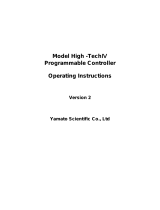ENGINEERING GUIDES
2
Date of last revision: 11.06 TREADMILL.UPPERBDENG.DGF1J.CVTM0033.CVTM0031.REV2
1. OVERVIEW
1.1 T9800 CONSOLE DISPLAY FIELDS & KEYS
1.2 OPERATION MODES
1.3 GENERAL NOTES
2. USER ENGINEERING MODE
USER ENGINEERING MODE MENU NAVIGATION
USER ENGINEERING MODE SCREENS
3. ENGINEERING MODE
ENGINEERING MODE MENU NAVIGATION
3.1 CONFIGURATION MENU
3.2 SYSTEM TESTS
3.2.1 HARDWARE TEST
3.2.2 DISPLAY TEST
3.2.2.1 DOT MATRIX
3.2.2.2 ALPHA NUMERIC
3.2.2.3 SEVEN SEGMENT
3.2.3 KEYBOARD TEST
3.2.4 SAFETY SWITCH TEST
3.2.5 IO TEST
3.2.6 BURN-IN TEST
3.2.7 ELEVATION BURN-IN TEST
3.2.8 EXIT
3.3 AUTO-CALIBRATION
3.4 MANUAL CALIBRATION
3.4.1 P0 PWM MIN SPEED
3.4.2 P1 PWM 1/2 MAX SPEED
3.4.3 P2 PWM MAX SPEED
3.4.4 P4 ELEVATION MIN
3.4.5 P5 ELEVATION MAX
3.4.6 P13 ELEVATION DIRECTION
3.4.7 P19 MAGNET COUNT
3.4.8 P20 EFFECTIVE DIAMETER
3.4.9 P21 PWM START SPEED
3.4.10 P29 RAMP TIME
3.4.11 EXIT
3.5 MAINTENANCE
3.5.1 TOTAL HOURS
3.5.2 TOTAL DISTANCE
3.5.3 BELT/MOTOR HOURS
3.5.4 LIFT MOTOR HOURS
3.5.5 LUBRICATE DECK MESSAGE
3.5.6 CLEAN TREADMILL MESSAGE
3.5.7 ERROR LOG
3.5.8 EXIT
3.6 SOFTWARE VERSION
3.7 EXIT
4. SYSTEM CALIBRATION PROCEDURE
4.1 ENTER ENGINEERING MODE
4.2 SET ELEVATION DIRECTION
4.3 SET ELEVATION MINIMUM
4.4 SET ELEVATION MAXIMUM
4.5 SET MAGNET COUNT
4.6 SET EFFECTIVE DIAMETER
4.7 RUN AUTO-CALIBRATION
5. TROUBLESHOOTING GUIDE
5.1 ERROR CODES
5.2 ELEVATION MOVEMENT RELATED ERRORS
5.2.1 E1 – ELEVATION REVERSED ERROR
5.2.2 E2 – ELEVATION RANGE ERROR
5.2.3 E3 – ELEVATION STALL ERROR
5.3 SPEED MOVEMENT RELATED ERRORS
5.3.1 E5 – OVER-SPEED ERROR
5.3.2 E6 – INPUT BELT SPEED ERROR
5.3.3 E7 – SPEED STALL ERROR
5.3.4 E9 – SPEED RANGE ERROR
5.3.5 CORRECTIVE ACTION PROCEDURES – SPEED ISSUES
5.3.5.1 SPEED FEEDBACK ISSUES
5.3.5.2 SPEED CONTROL ISSUE
5.3.5.3 SPEED CALIBRATION ISSUE
5.4 SYSTEM OPERATION ERRORS
5.4.1 E16 – STUCK KEY ERROR
5.4.2 E18 – SAFETY SWITCH TEST FAILURE
5.4.3 E19 – NOVRAM FAILURE
TABLE OF FIGURES
FIGURE 1.1-1.1.1
FIGURE 1.2-1.2.1
FIGURE 1.3-2.1
DGF1J Upper Board: Engineering Guide




















